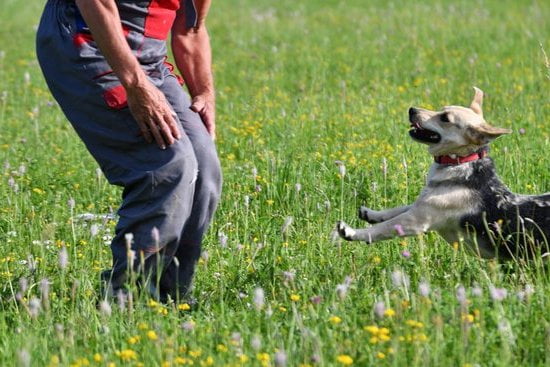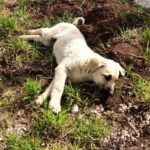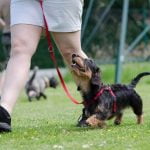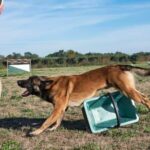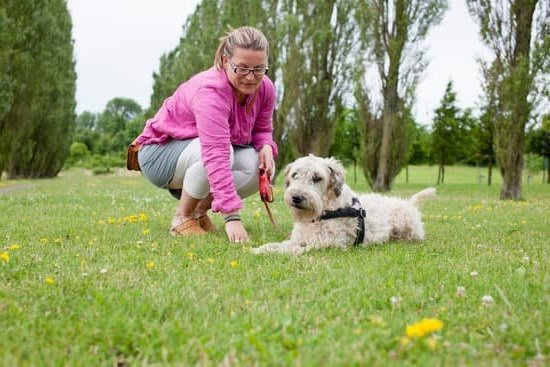Airport sniffer dogs play a crucial role in ensuring the security of airports around the world. With their exceptional sense of smell and recognition skills, these highly trained canines are able to detect dangerous substances and identify potential threats that may go unnoticed by human security measures. The training process for airport sniffer dogs is rigorous and thorough, designed to develop their natural abilities and prepare them for real-life scenarios in an airport environment.
Sniffer dogs are an integral part of airport security protocols due to their unmatched olfactory capabilities. While humans have about 5 million scent receptors, dogs have approximately 300 million, making them highly effective in detecting even the faintest traces of contraband or illicit substances. Whether it’s explosives, drugs, or other prohibited materials, sniffer dogs can sniff out hidden items with remarkable accuracy.
The selection process for airport sniffer dogs is meticulous as only certain breeds possess the desired traits necessary for this line of work. Factors such as temperament, drive, obedience, and physical fitness are carefully evaluated to determine the suitability of a candidate dog for K-9 unit training.
Once selected, these dogs undergo a series of training techniques that enhance their sense of smell and recognition skills, preparing them to perform at their best in high-pressure situations within an airport setting.
Overall, airport sniffer dogs play an invaluable role in maintaining the safety and security of airports globally. Their unique abilities combined with intensive training make them a vital asset in detecting potential threats before they can escalate into serious incidents. In the following sections, we will explore the various aspects involved in training these remarkable canines and delve deeper into their incredible achievements in ensuring airport security worldwide.
Understanding the Role of Sniffer Dogs at Airports
Sniffer dogs play a critical role in ensuring the security of airports around the world. These highly trained canines are capable of detecting a wide variety of substances, including explosives, drugs, and contraband. Understanding the role and capabilities of sniffer dogs is essential for comprehending their value in airport security.
Firstly, sniffer dogs are primarily used to search for prohibited items that may pose a threat to airport safety. Their keen sense of smell allows them to detect even minute traces of substances that humans may not be able to detect. This makes sniffer dogs invaluable assets in detecting hidden explosives or narcotics that could potentially endanger passengers and aircraft.
Secondly, sniffer dogs can help deter criminal activity at airports through their mere presence. The knowledge that there are highly trained detection canines patrolling the premises serves as a strong deterrent to individuals who may be contemplating smuggling illegal substances or materials through airports.
To give an overview of their abilities, here are some ways in which sniffer dogs contribute to airport security:
- Substance Detection: Sniffer dogs excel at detecting different types of substances such as explosives, narcotics, firearms, and currency.
- Search Accuracy: These dogs have an impressive success rate when it comes to locating hidden or concealed items.
- Efficiency: Sniffer dogs can cover large areas quickly and efficiently, making them ideal for searching baggage, cargo, and open areas within airports.
- Adaptability: They are trained to work in various environments and situations like crowded terminals, aircraft cabins, freight areas, and vehicles.
The Selection Process
The selection process for finding the perfect candidate dogs for K-9 unit training is crucial in ensuring the effectiveness and success of airport sniffer dogs. This rigorous process involves several steps to identify dogs with the right temperament, physical attributes, and potential for scent detection.
- Initial Screening: In the first stage of the selection process, potential candidates undergo an initial screening to assess their basic qualities. This includes evaluating their health, age, size, and overall appearance. Dogs that do not meet the minimum requirements are eliminated from consideration.
- Temperament Evaluation: The next step involves assessing the candidates’ temperament and personality traits. Airport sniffer dogs need to be friendly, sociable, confident, and adaptable to various environments. They should not display aggression or fearfulness when exposed to unfamiliar situations or noises.
- Scent Detection Test: A crucial aspect of selecting candidate dogs is evaluating their natural scent detection abilities. Dogs with a keen sense of smell are preferred as they can detect even trace amounts of substances used in illegal activities such as drugs or explosives. During this test, various scents are presented to the dogs, and their reactions are observed closely.
Once the initial screening and evaluations are completed, a shortlist of potential candidates is created. These selected dogs move on to further assessment and specialized training programs designed specifically for airport sniffer dogs.
To summarize:
- Initial screening evaluates health, age, size, and appearance.
- Temperament evaluation assesses sociability and adaptability.
- Scent detection tests measure natural abilities in detecting illegal substances.
By employing a meticulous selection process, airport authorities can ensure that only dogs with the most suitable attributes enter K-9 unit training programs. This ensures that airport sniffer dog teams are capable of efficiently detecting any potential security threats while maintaining high levels of accuracy and reliability in their work.
Early Basic Training
Introduction to Early Basic Training
Early basic training is a crucial stage in the development of airport sniffer dogs. This is the phase where the foundation for their future roles as security assets is laid. During this period, key skills such as obedience and behavior control are instilled in the dogs. Additionally, they begin learning how to identify target scents and become familiar with their role within a K-9 unit.
Familiarizing with Key Commands and Obedience Training
In early basic training, airport sniffer dogs are first taught general obedience commands such as sit, stay, and heel. These commands form the basis for effective communication between the dog and its handler, ensuring that the dog responds promptly and accurately to instructions. Dogs undergo rigorous exercises to strengthen their obedience skills under various distractions, preparing them for challenging environments they will encounter at airports.
Introduction to Detection Tasks and Scent Recognition
Another important aspect of early basic training for airport sniffer dogs is introducing them to detection tasks and developing their sense of smell. Trainers utilize specialized tools or containers designed to hold target scents like explosives or drugs. The dogs are gradually exposed to these scents while associating them with positive reinforcement such as treats or playtime. This conditioning process helps build an association between the scent and reward, motivating the dog to actively search for it.
Throughout this stage, trainers work on sharpening the dog’s olfactory abilities by increasing difficulty levels and creating more realistic scenarios gradually. For instance, they might introduce distractions or hide target scents in complex settings like crowded areas or vehicles. These exercises not only enhance the dogs’ ability to detect specific odors but also reinforce their focus and determination when searching for potential threats.
By receiving comprehensive early basic training focused on obedience and scent recognition capabilities, airport sniffer dogs establish a solid foundation upon which further specialized techniques can be built upon. The careful nurturing of these essential skills ensures that the dogs are prepared for the demanding tasks they will encounter during their training journey and subsequent deployment at airports all over the world.
Specialized Training Techniques
Developing the sense of smell and recognition skills of airport sniffer dogs is crucial to their effectiveness in detecting contraband or dangerous substances. These specialized training techniques are designed to enhance the natural abilities of these K-9 units, allowing them to detect even trace amounts of illicit substances or explosives.
One technique used in developing the dogs’ sense of smell is known as imprinting. During this stage, trainers expose the dogs to various scents such as narcotics, explosives, or firearms. By repeatedly exposing them to these scents and rewarding them when they indicate a positive response, dogs learn to associate certain smells with rewards, thus forming a strong connection between the scent and positive reinforcement.
Another technique used in training airport sniffer dogs involves teaching them specific recognition cues for different substances. Trainers use a method called target odor recognition training (TORT) where canisters or containers filled with different target odors are used. The dogs are then taught to identify and alert their handlers to the presence of specific target odors by indicating in a particular way, such as sitting down or scratching at a certain spot.
To ensure that the training is thorough and comprehensive, trainers also employ realistic scenarios that mimic real-life situations where the dogs would be deployed at airports. This includes setting up mock checkpoints where contraband items are strategically hidden for the dog to locate. Through these simulation exercises, airport sniffer dogs develop their search techniques and learn how to work effectively with their handlers in high-pressure environments.
In summary, specialized training techniques play a crucial role in developing airport sniffer dogs’ sense of smell and recognition skills. Imprinting helps create strong associations between scents and rewards, while target odor recognition training teaches dogs how to identify specific substances accurately.
Realistic simulation exercises further enhance their abilities when operating under real-life scenarios at airports. Through these techniques, airport sniffer dogs become highly skilled in detecting contraband and play a vital role in ensuring the safety and security of airports worldwide.
Preparing for Real-Life Scenarios
Once the basic training is completed, airport sniffer dogs undergo intense simulation exercises to prepare them for real-life scenarios. These exercises are crucial in developing the dogs’ ability to detect various substances and ensuring they can effectively respond in high-pressure situations. The goal is to simulate airport environments as closely as possible, providing the dogs with exposure to different scents and challenges they may encounter on a daily basis.
One of the main simulation exercises that airport sniffer dogs go through is the detection of explosive materials. Trainers create controlled environments where the dogs can practice identifying different types of explosives and alerting their handlers accordingly. These exercises involve using various training aids, such as scent samples or mock luggage, which contain trace amounts of explosives. The dogs are trained to pick up on these scents and accurately indicate their presence.
Another important aspect of simulation exercises is desensitization training. This involves exposing the dogs to distractions and disturbances commonly found in busy airport settings, such as loud noises, crowds, and moving vehicles. By gradually introducing these elements during training sessions, the dogs become familiar with their presence and learn to focus on their tasks despite potential distractions.
The effectiveness of these simulation exercises lies in their ability to replicate real-life scenarios while maintaining a controlled environment. By exposing airport sniffer dogs to various substances, situations, and stimuli they may encounter during their duties, trainers can ensure that they are well-prepared and equipped to carry out their role in enhancing airport security.
| Simulation Exercises for Airport Sniffer Dogs |
|---|
| – Detection of Explosive Materials |
| – Desensitization Training |
| – Replicating Real-Life Scenarios |
Bonding with Handlers
Airport sniffer dogs are an integral part of the K-9 unit at airports, and their effectiveness greatly relies on the bond they form with their handlers. This section will explore the importance of trust and communication between airport sniffer dogs and their handlers in ensuring the success of their missions.
Developing Trust
Building trust is a crucial aspect of the relationship between airport sniffer dogs and their handlers. Handlers must earn the trust of their canine partners through consistent care, positive reinforcement, and a genuine connection. It involves establishing a strong emotional bond that allows both parties to rely on each other entirely.
For example, the handler must demonstrate reliability and consistency in reinforcing proper behavior during training sessions, reward periods, and real-life scenarios. Dogs need to feel comfortable relying on their handlers when they encounter potentially dangerous situations or when they need to communicate important information.
Effective Communication Techniques
Communication plays a vital role in ensuring that airport sniffer dogs can effectively carry out their work. Handlers rely on various communication techniques to convey commands clearly to their dogs. These techniques include verbal cues, hand signals, body language, and specific gestures. Consistency is key when using these communication methods as it ensures that the dog can anticipate what actions are expected from them in different scenarios.
Additionally, handlers pay close attention to their dog’s body language to interpret any signals indicating changes in behavior or heightened alertness. Understanding these subtle clues allows handlers to be proactive in identifying potential threats or discovering hidden contraband items more efficiently.
Teamwork
The relationship between airport sniffer dogs and handlers is centered around teamwork. Both parties must understand each other’s strengths and weaknesses and work together towards a common goal – ensuring safety at airports.
Handlers play a crucial role in providing for all the needs of the dog including exercise, grooming, veterinary care as well as ongoing training sessions beyond initial training. Daily routines and activities are designed to foster the bond between the dog and handler and enhance their overall relationship.
Furthermore, airport sniffer dogs benefit from positive reinforcement during training sessions, which promotes a sense of trust and teamwork. Handlers reward desired behaviors with treats, praise, or playtime, reinforcing the idea that working together is not only essential but also enjoyable.
Maintaining Performance
One of the key factors in ensuring an airport sniffer dog’s effectiveness is ongoing training and reinforcement. This section will delve into the importance of maintaining performance through continuous training for these highly skilled canines.
Maintaining the performance of airport sniffer dogs requires regular training sessions to reinforce their skills and keep them sharp. These dogs are trained to detect various substances such as explosives, drugs, and other illegal or dangerous materials. To ensure their reliability, consistent training is essential.
Handlers work closely with the dogs to carry out regular exercises that simulate real-life scenarios. These simulations help keep the dogs focused and accurate in their detection abilities. For example, handlers may set up training scenarios where hidden substances are placed in different locations within an airport to challenge the dog’s scent discrimination skills.
Additionally, trainers use positive reinforcement techniques such as rewards or playtime to motivate the dogs during training sessions. This helps to maintain their enthusiasm for work and encourages them to continue performing at a high level. Positive reinforcement also strengthens the bond between handler and dog, fostering trust and effective communication between the two.
In order to track progress and identify areas for improvement, data is collected during each training session. This data could include metrics such as accuracy rate, response time, and behavior observations. By analyzing this information, trainers can tailor future training sessions to address any weaknesses or gaps in performance.
Table: Sample Training Data Tracking
| Training Session Date | Accuracy Rate (%) | Response Time (seconds) |
|---|---|---|
| April 15, 2021 | 90 | 3 |
| April 22, 2021 | 95 | 2.5 |
| April 29, 2021 | 92 | 2.8 |
By consistently investing time and resources into ongoing training and reinforcement, airport sniffer dogs can maintain their high level of performance and continue to play a critical role in ensuring airport security.
The Challenges of Training
Training airport sniffer dogs can be a challenging task that requires the dedication and perseverance of both handlers and dogs. This section will explore some of the obstacles faced by handlers and dogs alike during the training process.
Physical Challenges
One of the main physical challenges faced by both handlers and dogs in training is the strenuous nature of the work. Dogs are required to undergo long hours of intense physical activity, including running, climbing, and searching for scents in different environments. Their bodies must be conditioned to endure this level of exertion without getting fatigued or injured. Handlers also face physical challenges as they need to keep up with their highly active and energetic canine partners.
Additionally, working in various weather conditions can pose a challenge to both handlers and dogs. They must train in extreme temperatures, varying humidity levels, and adverse weather conditions such as rain or snow. This not only tests their endurance but also their ability to focus and perform effectively despite external factors.
Mental Challenges
Training airport sniffer dogs also brings about several mental challenges for both handlers and dogs. For dogs, developing their sense of smell requires immense concentration as they learn to differentiate between various scents amidst distractions at an airport. Dogs must learn to filter out irrelevant scents while focusing on detecting prohibited substances accurately.
Handlers face mental challenges in providing consistent training routines and maintaining a high level of concentration throughout training sessions. They must devise creative techniques to engage their canine partners, keeping them motivated and enthusiastic about their tasks. Moreover, handlers should possess strong problem-solving skills as they may encounter unexpected scenarios during training that require quick thinking and adaptability.
Building Trust
Another significant challenge faced by both handlers and dogs is building trust with each other. Handlers need to establish a strong bond with their canine partners based on mutual trust and respect. This process involves spending quality time together outside of training sessions, engaging in play, grooming, and other bonding activities. Furthermore, handlers need to develop effective communication skills to convey commands and cues to their dogs accurately.
On the other hand, dogs must learn to trust their handlers and rely on their guidance. They need assurance that their handlers will always provide clear instructions and support them during challenging situations. Building a strong foundation of trust is crucial for the success of training airport sniffer dogs and ensuring efficient performance in real-life scenarios.
The Success Stories
Airport sniffer dogs play a crucial role in enhancing airport security worldwide. These well-trained canines have achieved some impressive successes in their line of duty, demonstrating their invaluable contributions to keeping airports safe and secure.
One notable success story involves a sniffer dog named Sally at Chicago O’Hare International Airport. Sally was recognized for her exceptional skills in detecting illegal drugs and narcotics. Her keen sense of smell and dedication led to the seizure of millions of dollars worth of drugs, contributing to the disruption of drug trafficking networks.
Another remarkable achievement comes from Heathrow Airport in London, where a sniffer dog named Buster played an instrumental role in intercepting smuggled cash. Buster’s exceptional training enabled him to detect hidden cash within luggage and packages, leading to the confiscation of significant amounts of money linked to criminal activities.
In addition, there have been numerous instances where airport sniffer dogs have successfully detected explosives and prevented potential acts of terrorism. For example, at Amsterdam’s Schiphol Airport, a highly skilled sniffer dog named Max detected a suspicious package containing explosives concealed inside a passenger’s bag. The swift action taken based on Max’s alertness prevented a potentially catastrophic incident.
These success stories highlight the remarkable capabilities and impact of airport sniffer dogs. Their consistent performance in detecting contraband, explosives, and illegal substances is a testament to their rigorous training and specialized skills. The dedication and teamwork between handlers and these canine companions are instrumental in ensuring airport security remains at its highest level.
| Sniffer Dog | Achievement |
|---|---|
| Sally (Chicago O’Hare International Airport) | Seizure of millions of dollars worth of drugs |
| Buster (Heathrow Airport) | Confiscation of significant amounts of smuggled cash |
| Max (Schiphol Airport) | Prevention of potential terrorist incident involving explosives |
Conclusion
In conclusion, it is evident that airport sniffer dogs play a crucial role in ensuring the security of airports worldwide. These highly trained and skilled canines are able to detect substances and materials that may pose a threat to aviation safety. From the selection process to specialized training techniques, these dogs are prepared to handle real-life scenarios and adapt quickly in high-pressure situations.
One of the key factors in the success of airport sniffer dogs is the strong bond they form with their handlers. The trust and communication between the dog and handler are essential for effective teamwork. Through consistent training and reinforcement, these relationships are strengthened, resulting in a seamless coordination between dog and handler during operations.
It is important to acknowledge the challenges faced by both handlers and dogs during the training process. From overcoming obstacles to maintaining performance, the dedication and perseverance displayed by handlers greatly contribute to the success of these teams. Handlers must continuously adapt their training techniques to meet evolving threats, while also addressing any specific needs or issues faced by individual dogs.
The achievements of airport sniffer dogs worldwide serve as a testament to their invaluable contributions to airport security. These canines have successfully detected narcotics, explosives, and other dangerous materials that may have otherwise gone undetected. The presence of airport sniffer dogs not only acts as a deterrent, but also provides a sense of reassurance for travelers.
Frequently Asked Questions
How are airport drug dogs trained?
Airport drug dogs are trained using a method called odor recognition training. This involves introducing the dogs to various odors and associating them with a reward, usually food or play. Initially, the dogs are taught to recognize a specific target odor, which could be drugs such as cocaine, marijuana, or heroin.
They are then taught to indicate when they detect that odor by performing a specific behavior like sitting or scratching at the source of the smell. The training is typically conducted in a controlled environment with the guidance of experienced trainers.
Are airport dogs trained to smell drugs?
Yes, airport dogs are specifically trained to detect and alert their handlers to the presence of drugs. These highly specialized canines have an incredible sense of smell, capable of detecting even very small quantities of drugs hidden in various items such as luggage, packages, or personal belongings.
The dogs are trained to identify specific drug odors and differentiate them from other scents in the environment. It’s important to note that while airport dogs can signal the presence of drugs based on their training, they do not possess legal authority; it is ultimately up to law enforcement officers to determine if further action should be taken.
How long does it take to train a drug sniffing dog?
Training a drug sniffing dog can vary in duration depending on several factors such as the breed of dog, its individual aptitude and drive for detection work, as well as the level of complexity required for its specific tasks. On average, it takes several weeks to several months to train a drug detection dog fully.
During this time, trainers systematically expose the canine to different training scenarios and progressively increase the difficulty level as they become proficient in identifying target odors accurately.

Welcome to the blog! I am a professional dog trainer and have been working with dogs for many years. In this blog, I will be discussing various topics related to dog training, including tips, tricks, and advice. I hope you find this information helpful and informative. Thanks for reading!

